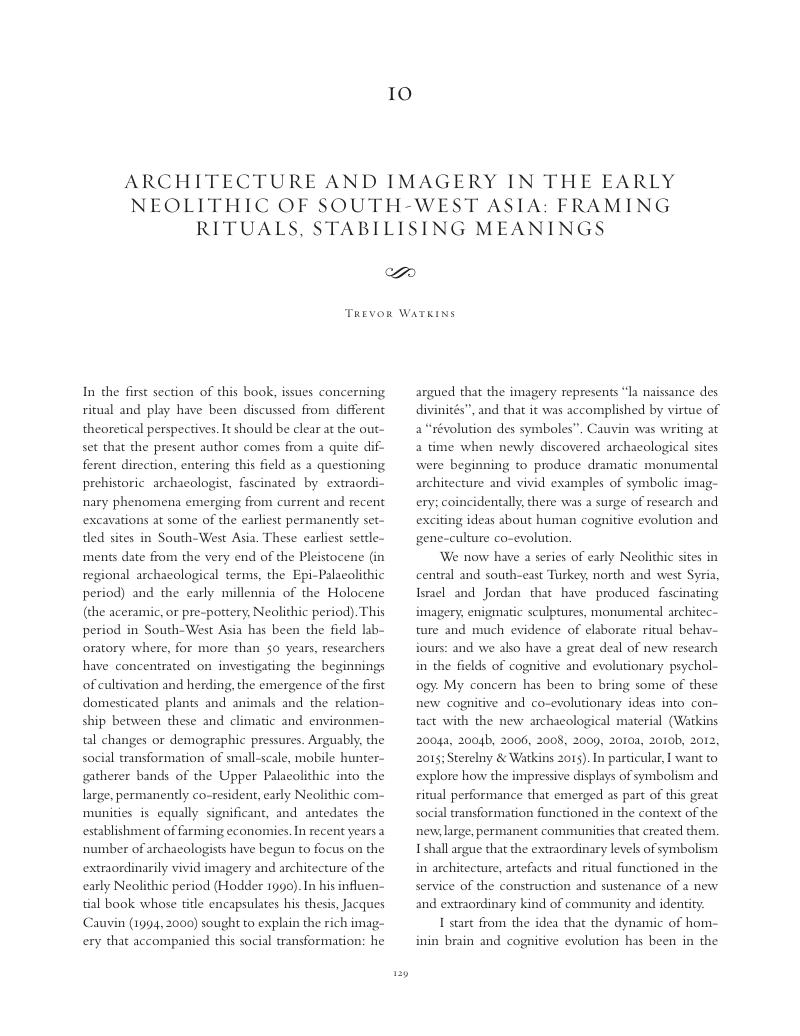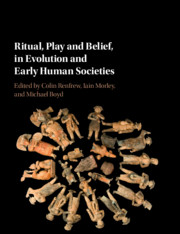Book contents
- Ritual, Play and Belief, in Evolution and Early Human Societies
- Ritual, Play and Belief, in Evolution and Early Human Societies
- Copyright page
- Dedication
- Contents
- Notes on the Contributors
- Acknowledgements
- 1 Introducing Ritual, Play and Belief, in Evolution and Early Human Societies
- 2 Introduction: Play as the Precursor of Ritual in Early Human Societies
- Part I Play and Ritual: Forms, Foundations and Evolution in Animals and Humans
- Part II Playing with Belief and Performance in Ancient Societies
- 8 Maya Sacred Play: The View from El Perú-Waka’
- 9 Communal Performance and Ritual Practice in the Ancestral Puebloan Era of the American Southwest
- 10 Architecture and Imagery in the Early Neolithic of South-West Asia: Framing Rituals, Stabilising Meanings
- 11 Dancing with Masks in the Proto-historic Near East
- 12 Ritual, Mimesis and the Animal World in Early China
- 13 Manipulating the Bones: Eating and Augury in the Maltese Temples
- Part III The Ritual in the Game, the Game in the Ritual
- Part IV From Play to Faith? Discussion
- Index
- References
10 - Architecture and Imagery in the Early Neolithic of South-West Asia: Framing Rituals, Stabilising Meanings
from Part II - Playing with Belief and Performance in Ancient Societies
Published online by Cambridge University Press: 06 December 2017
- Ritual, Play and Belief, in Evolution and Early Human Societies
- Ritual, Play and Belief, in Evolution and Early Human Societies
- Copyright page
- Dedication
- Contents
- Notes on the Contributors
- Acknowledgements
- 1 Introducing Ritual, Play and Belief, in Evolution and Early Human Societies
- 2 Introduction: Play as the Precursor of Ritual in Early Human Societies
- Part I Play and Ritual: Forms, Foundations and Evolution in Animals and Humans
- Part II Playing with Belief and Performance in Ancient Societies
- 8 Maya Sacred Play: The View from El Perú-Waka’
- 9 Communal Performance and Ritual Practice in the Ancestral Puebloan Era of the American Southwest
- 10 Architecture and Imagery in the Early Neolithic of South-West Asia: Framing Rituals, Stabilising Meanings
- 11 Dancing with Masks in the Proto-historic Near East
- 12 Ritual, Mimesis and the Animal World in Early China
- 13 Manipulating the Bones: Eating and Augury in the Maltese Temples
- Part III The Ritual in the Game, the Game in the Ritual
- Part IV From Play to Faith? Discussion
- Index
- References
Summary

- Type
- Chapter
- Information
- Ritual, Play and Belief, in Evolution and Early Human Societies , pp. 129 - 142Publisher: Cambridge University PressPrint publication year: 2017
References
- 2
- Cited by



